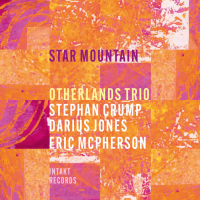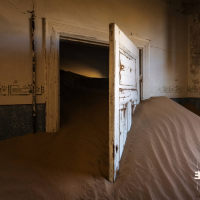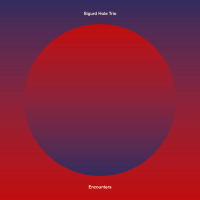Home » Jazz Articles » Album Review » Cliff Korman: Bossas and Ballads
Cliff Korman: Bossas and Ballads
Bossas and Ballads is Korman's pensive solo piano follow-up to Brasilified (Tiger Turn, 2022), an exuberant trio offering featuring drummer Rafael Barata and bassist Augusto Mattoso. Bossas and Ballads presents a mix of introspective compositions by Hermeto Pascoal ("Montreux"), Antonio Carlos Jobim ("Fotografia"), John Lennon and Paul McCartney ("Michelle"), Toninho Horta ("Beijo Partido"), Leonard Bernstein ("Some Other Time") and Milton Nascimento ("Encontros e Despedidas"). Two haunting choro-canções complete the program: "Ternura" (Tenderness) by clarinetist, composer and arranger K-Ximbinho (1917-1980) and the exquisite "Choro pro Zé" by guitarist-composer Guinga.
Korman's delicate interpretation of "Some Other Time" bows to Bill Evans. It is one of those pieces whose lyrics are so wedded to the melody that they seem to emerge as strongly in an instrumental performance as when sung, particularly the wistful intonations of the hook, "Oh well, we'll catch up some other time." A Bernstein composition with a lyric by Betty Comden and Adolph Green, it emanates from the musical On the Town (1944), which brought us such tunes as "Lonely Town" and "New York, New York." Among many instrumental renditions, Evans' stands out, due in part to its memorable introduction, a quiet ostinato reminiscent—as Chuck Israels has suggested—of Eric Satie's Gymnopédies (1888). The little vamp developed into the improvised composition "Peace Piece" (Everybody Digs Bill Evans, Riverside, 1958) and later appeared in "Flamenco Sketches" (Miles Davis, Kind of Blue, Columbia, 1959). Evans created the figure as an intro to "Some Other Time" for the Riverside session (Sam Jones on bass, Philly Joe Jones at the drums). The cut did not make it onto the 1958 release but was appended later as a bonus track. In Korman's rendering, the poignancy of the Bernstein-Comden-Green is imbued with the ethos of the Gymnopédies and Evans' "Peace Piece" (plus "Flamenco Sketches") in a serenely powerful way. (Check the YouTube below.)
References to Evans (and Davis) appear in Korman's own lovely "Almonds and Roses," released as an album single, which is based on the harmonic scheme of "Blue in Green" (Kind of Blue). Korman wrote it in the 1990s, when he was first finding his way into Brazilian jazz. Decades later, it appears as a centerpiece of Bossas and Ballads, his first solo piano album recorded in Brazil, an intimate reflection of a continuing musical voyage.
Track Listing
Ternura; Montreux; Michelle; Fotografia; Almonds and Roses; Beijo Partido; Some Other Time; Choro Para Zé; Encontros e Despedidas.
Personnel
Cliff Korman
pianoAlbum information
Title: Bossas and Ballads | Year Released: 2024 | Record Label: Tiger Turn
Tags
PREVIOUS / NEXT
Support All About Jazz
 All About Jazz has been a pillar of jazz since 1995, championing it as an art form and, more importantly, supporting the musicians who make it. Our enduring commitment has made "AAJ" one of the most culturally important websites of its kind, read by hundreds of thousands of fans, musicians and industry figures every month.
All About Jazz has been a pillar of jazz since 1995, championing it as an art form and, more importantly, supporting the musicians who make it. Our enduring commitment has made "AAJ" one of the most culturally important websites of its kind, read by hundreds of thousands of fans, musicians and industry figures every month.






















